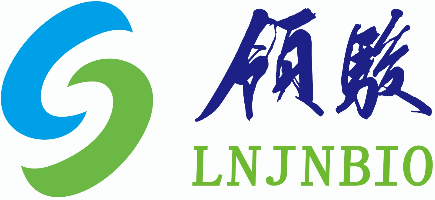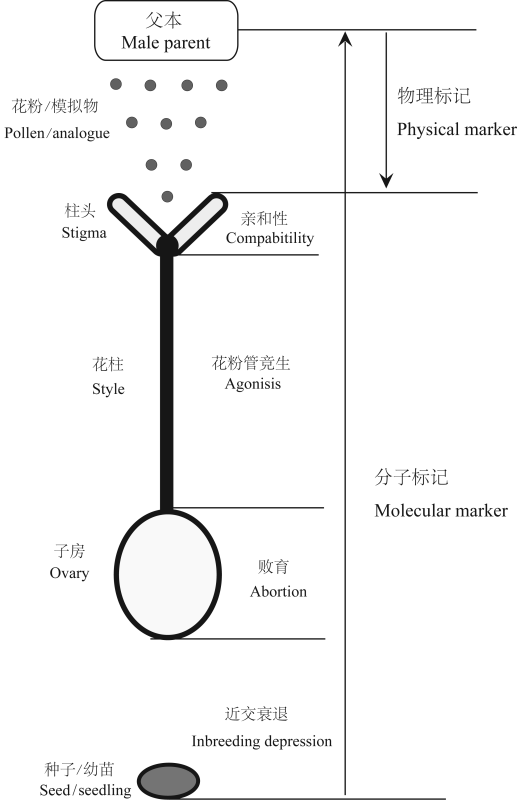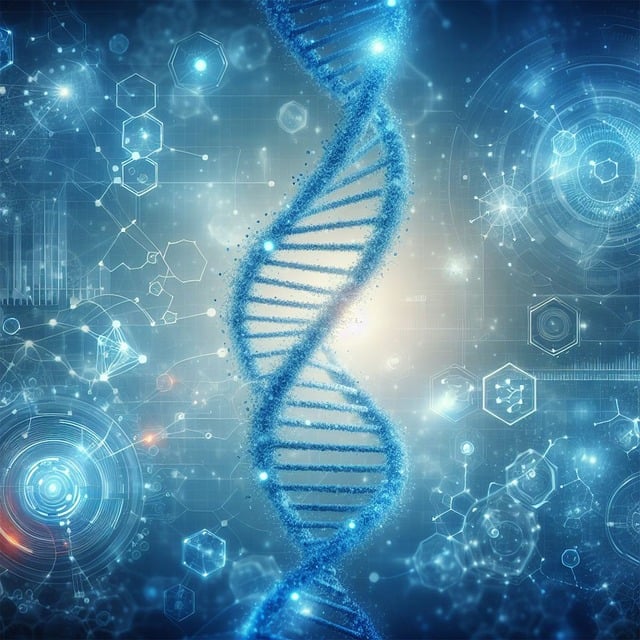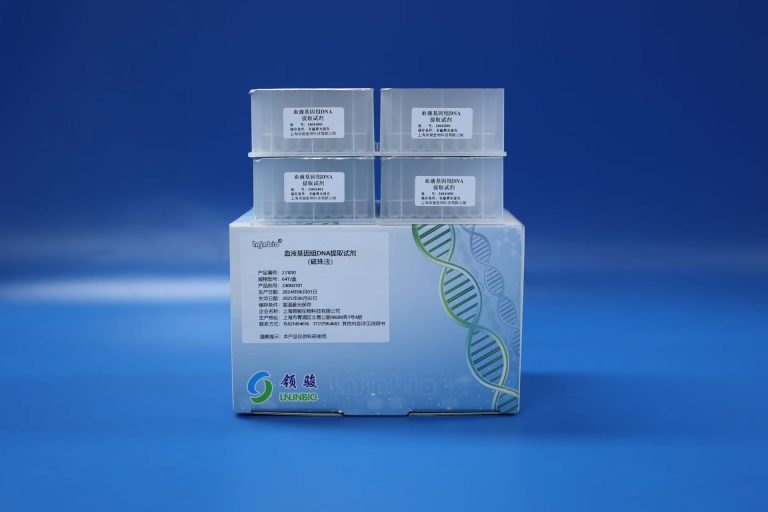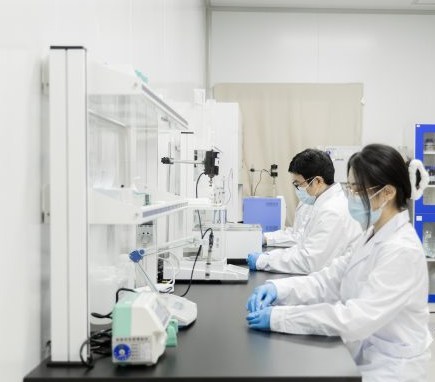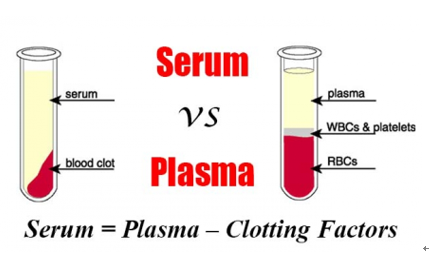Professional Manufacturer of Biomagnetic Beads
As the third generation of PCR, digital PCR has the advantages of absolute quantification, low sample requirement, high sensitivity, and tolerance to inhibitors, and is widely used in the detection of gene mutation, copy number variation, pathogenic microorganisms, and genetically modified crops. The digital PCR on the market is generally Droplet Digital PCR (ddPCR) represented by Bio-Rad and Chip Digital PCR (cdPCR) represented by Thermo Fisher; i.e., Bio-Rad divides the amplification system into nano or micron units by microfluidic technology in the form of water-in-oil, while Thermo Fisher divides the amplification system into nano or micron units by microfluidic technology, and Thermo Fisher divides the amplification system into nano or micron units by microfluidic technology. micrometer units and Thermo Fisher separates the amplification system into nano/micrometer units by physical cutting. These two technology routes are most widely used with Bio-Rad droplet microfluidics, which offers significant advantages of miniaturization, regionalization, and parallelization due to its ability to encapsulate microspheres, cells, and other reagents in nanoliter or picoliter microreactors.
Exosomes are sub-micron membrane vesicles (30-200 nm) secreted by cells and contain important information such as proteins, tiny RNA, and DNA, which are closely related to clinical liquid biopsies for disease diagnosis and prognostic testing. However, their small size poses a great challenge to isolate exosomes from complex body fluids with high throughput and purity. Pinning Zhou et al. proposed a reverse wave channel structure using a viscoelastic fluid with the addition of biocompatible polymers [2] for elastic inertial focusing and sorting of submicron particles and exosomes. The repetitive wave channel structure produces a periodic reverse Dean secondary flow of microfluid that promotes microsphere focusing compared to a conventional straight-through channel. Using four different sizes of fluorescent submicron spheres (1 µm, 500 nm, 300, and 100 nm) to study the focusing behavior under different conditions, they achieved simple, high-throughput, label-free sorting of exosomes with purity higher than 92% and recovery higher than 81%. This developed elastic inertial exosome sorting technique may provide a promising platform for various exosome-related biological studies and pharmaceutical applications.
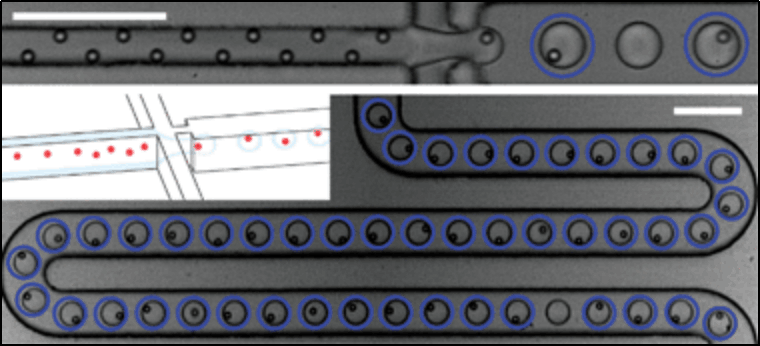
Despite the great potential of these applications, the encapsulation of microspheres/cells is completely randomized, and constrained by the Poisson distribution. The probability of a droplet encapsulating a single microsphere is theoretically no more than 37%, wasting a large number of microspheres and droplet partitions resulting in low detection throughput. To improve the utilization of microspheres or rare cells, commonly used methods typically use a theoretical mean (λT) < 0.1 of microspheres/cells per droplet to determine the concentration of microspheres applied, which results in a very low encapsulation rate of individual microspheres, typically below 10%. Benefiting from the infinite number of droplets in the droplet system, the Poisson distribution has less impact on sample consumption and assay time when the number of microspheres/cells to be counted is small.
Droplet encapsulation of single cells or polystyrene microspheres has a wide range of applications in areas such as digital assays, single-cell sequencing, and drug screening. However, the encapsulation of microspheres is completely randomized by Poisson distribution constraints, and the theoretical likelihood of single-microsphere encapsulation is usually only about 10%. In ultra-high-multiplexed digitized detection or other applications that require the measurement of a large number of microspheres, the number of partitions that need to be counted is extremely high, leading to a large increase in the number of invalid droplet counts and redundancy of detection data. For this reason, Xiaoyu Yue designed a Bead Ordered Arrangement Droplet (BOAD) system as a way to break the limitations of the Poisson distribution [1].
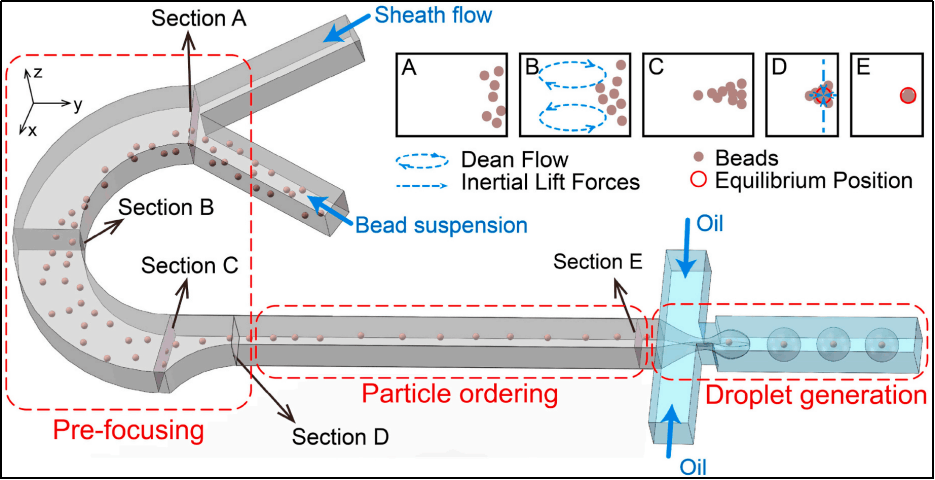
The BOAD system cleverly combines sheath flow, Dean vortex, and compression flow channel to realize the first-ever ordered arrangement of microspheres and enables the fastest ordered arrangement of microspheres in the shortest structure, with single-bead encapsulation efficiency up to about 86%. Further applications to encapsulate coded microspheres and IL-10-targeted magnetic polystyrene microspheres have fully demonstrated the potential of microsphere-based ultra-high-multiplexed digital detection. As a result, the BOAD system is very promising for many applications that require high single-particle encapsulation rates within limited compartments, such as ultra-high-multiplexed digital bioassays, single-cell analysis, drug screening, and single exosome detection.
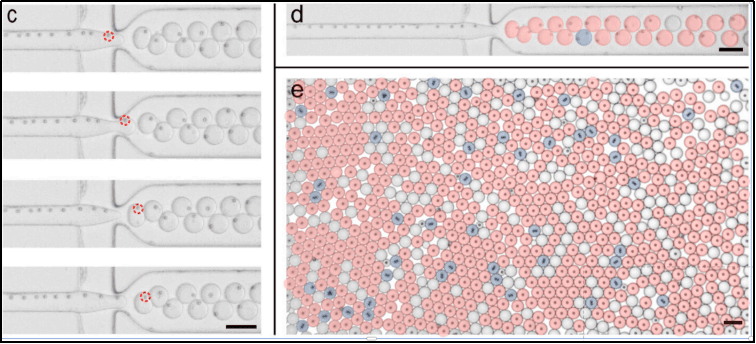
In all applications, droplet-based encapsulation of particles (cells and microspheres) is an ideal platform for single-cell analysis of cellular reprogramming, drug discovery, and secretion detection due to its uniformly small reactor diameters, unique microscale flow phenomena, and unlimited number of isolation units, and also allows for bead-based ultrasensitive digital detection of low-abundance proteins, exosomes, and other biomolecules.
Reference:
[1] Yue, X., Fang, X., Sun, T., Yi, J., Kuang, X., Guo, Q., Wang, Y., Gu, H. and Xu, H. 2022. Breaking through the Poisson Distribution: A compact high-efficiency droplet microfluidic system for single-bead encapsulation and digital immunoassay detection. Biosensors and Bioelectronics. 211, (Sep. 2022), 114384. DOI:https://doi.org/10.1016/j.bios.2022.114384.
[2] Zhou, Y., Ma, Z., Tayebi, M. and Ai, Y. 2019. Submicron Particle Focusing and Exosome Sorting by Wavy Microchannel Structures within Viscoelastic Fluids. Analytical Chemistry. 91, 7 (Apr. 2019), 4577–4584. DOI:https://doi.org/10.1021/acs.analchem.8b05749.
Supplier
Shanghai Lingjun Biotechnology Co., Ltd. was established in 2016 which is a professional manufacturer of biomagnetic materials and nucleic acid extraction reagents.
We have rich experience in nucleic acid extraction and purification, protein purification, cell separation, chemiluminescence, and other technical fields.
Our products are widely used in many fields, such as medical testing, genetic testing, university research, genetic breeding, and so on. We not only provide products but also can undertake OEM, ODM, and other needs. If you have a related need, please feel free to contact us at sales01@lingjunbio.com.
